Agardh, C.A. 1823. Species algarum rite cognitae, cum synonymis, differentiis specificis et descriptionibus succinctis. Volumen primum pars posterior. Lund, Sweden: ex officina Berlingiana.
Archibald, John. 2014. One Plus One Equals One: Symbiosis and the Evolution of Complex Life. Oxford, England: Oxford University Press.
Bhattachrya, Debashish; Pelletreau, Karen N.; Price, Dana C.; Sarver, Kara E.; and Rumpho, Mary E. “Genome Analysis of Elysia chlorotica Egg DNA Provides No Evidence for Horizontal Gene Transfer into the Germ Line of This Kleptoplastic Mollusc.” Molecular Biology and Evolution 30(8):1843-1852.
Bisby, F.A.; Roskov, Y.R.; Orrell, T.M.; Nicolson, D.; Paglinawan, L.E.; Bailly, N.; Kirk, P.M.; Bourgoin, T.; Baillargeon, G.; and Ouvrard, D. (red.) 2011. "Elysia chlorotica Gould, 1870." Species 2000 & ITIS Catalogue of Life: 2011 Annual Checklist. Species 2000: Reading, U.K.: Species 2000. Retrieved October 7, 2014.
- Available at: http://www.catalogueoflife.org/annual-checklist/2011/details/species/id/6978546
Blanchet, Chelsea. 2012. "Elysia chlorotica (On-line)." The Animal Diversity Web. Ann Arbor, MI: University of Michigan Museum of Zoology. Retrieved October 7, 2014.
- Available at: http://animaldiversity.ummz.umich.edu/site/accounts/information/Elysia_chlorotica.html
Bleakney, J.S. 1997. Sea Slugs of Atlantic Canada and the Gulf of Maine. Halifax, Nova Scotia: Nimbus Publishing "The Nova Scotia Museum Field Guide Series."
Brahic, Catherine. 24 November 2008. "Solar-powered Sea Slug Harnesses Stolen Plant Genes." New Scientist: Life. Retrieved October 7, 2014.
- Available at: http://www.newscientist.com/article/dn16124-solarpowered-sea-slug-harnesses-stolen-plant-genes.html#.VB4JS2PoJ8E
Candolle, A.P. de. 1801. "Extrait d'un Rapport sur les Conserves." Bulletin des Sciences par la Société Philomathique de Paris 3:17-21.
Christensen, T. 1998. "Salinity Preference of Twenty Species of Vaucheria (Tribophyceae)." Journal of the Marine Biological Association of the United Kingdom 68:531-545.
Christensen, T. 1987. Seaweeds of the British Isles. Vol. 4. Tribophyceae (Xanthophyceae). London, England: British Museum (Natural History).
de Vries, Jan; Habicht, Jörn; Woehle, Christian; Huang, Changjie; Christa, Gregor; Wägele, Heike; Nickelsen, Jörg; Martin, William F.; and Gould, Sven B. 2013.”Is ftsH the Key to Plastid Longevity in Sacoglossan Slugs?” Genome Biology and Evolution 5(12):2540-2548.
Dearing, Stephanie. 15 January 2010. "Green Sea Slug Can Steal Plant Genes and Produce Chlorophyll." Digital Journal: Science. Retrieved October 7, 2014.
- Available at: http://www.digitaljournal.com/article/285735
Desbrosses, S. 5 September 2010. "Transfer horizontal de gènes et acquisition de chloroplastes chez Elysia Chlorotica." Nature Xtrême. Retrieved October 7, 2014.
- Available at: http://nature-extreme.psyblogs.net/2010/09/transfert-horizontal-de-genes-et.html
Edwards, Lin. 12 January 2010. "Green Sea Slug Makes Chlorophyll Like a Plant." Phys.Org.com: Biology > Plants & Animals. Science X Network. Retrieved October 7, 2014.
- Available at: http://phys.org/news182501672.html
"Elysia chlorotica." NCBI Taxonomy Browser: ID188477. Bethesda, MD: National Center for Biotechnology Information, U.S. National Library of Medicine. Retrieved October 7, 2014.
- Available at: http://www.ncbi.nlm.nih.gov/Taxonomy/Browser/wwwtax.cgi?lin=s&p=has_linkout&id=188477
"Elysia chlorotica: Eastern Emerald Elysia." Encyclopedia of Life. Retrieved October 7, 2014.
- Available at: http://eol.org/pages/450768/overview
"Elysia chlorotica (Eastern Emerald Elysia)." ZipcodeZoo: Species Identifier 511005. Retrieved October 7, 2014.
- Available at: http://zipcodezoo.com/Animals/E/Elysia_chlorotica/
"Elysia chlorotica Gould, 1870." ITIS Report: Taxonomic Serial No. 77940. Integrated Taxonomic Information System. Retrieved October 7, 2014.
- Available at: http://www.itis.gov/servlet/SingleRpt/SingleRpt?search_topic=TSN&search_value=77940
"Elysia chlorotica Gould, 1870." LifeDesks: Cataloging Diversity in the Sacoglossa. Retrieved October 7, 2014.
- Available at: http://sacoglossa.lifedesks.org/pages/337
Gould, A. A. 1870. Report on the Invertebrata of Massachusetts. Second Edition, Comprising the Mollusca. Boston, MA: Wright and Potter.
Guiry, M.D. 2011. "Vaucheria litorea C. Agardh, 1823." In: Costello, M.J.; Bouchet, P.; Boxshall, G.; Arvantidis, C.; Appeltans, W. 2012. European Register of Marine Species. EU-Nomen: Pan-European Species directories Infrastructure. Retrieved from PESI October 7, 2014.
- Available at: http://www.eu-nomen.eu/portal/taxon.php?GUID=urn:lsid:marinespecies.org:taxname:146024
Guiry, M.D. 2014. "Vaucheria litorea C. Agardh, 1823." In: Guiry, M.D.; and Guiry, G.M. 2014. AlgaeBase. Galway, Ireland: World-wide electronic publication of taxonomic information republished with permission of M.D. Guiry. World Register of Marine Species WoRMS AphiaID 146024. Retrieved October 7, 2014.
- Available at: http://www.marinespecies.org/aphia.php?p=taxdetails&id=146024
Guiry, M.D.; and Guiry, G.M. 2014. "Vaucheria litorea C. Agardh." AlgaeBase. Galway, Ireland: National University of Ireland world-wide electronic publication. Retrieved October 7, 2014.
- Available at: http://www.algaebase.org/search/species/detail/?species_id=522
Hanten, J.J.; and S.K. Pierce. 2001. "Synthesis of Several Light-harvesting Complex I Polypeptides Is Blocked by Cycloheximide in Symbiotic Chloroplasts in the Sea Slug, Elysia chlorotica (Gould): A Case for Horizontal Gene Transfer between Alga and Animal?" Biological Bulletin 201:33-44.
Kyrpides, Nikos. 6 April 2010. "Vaucheria litorea." Genomes Online Database: GOLD Project ID Gp0007484; Legacy ER Project ID 773; Legacy GOLD ID Gi06512. Retrieved October 7, 2014.
- Available at: http://genomesonline.org/project?id=7484
Milius, Susan. 13 February 2010. "Sea Slug Steals Genes for Greens, Turns Light into Energy like a Plant: Animal Can Make Its Own Chlorophyll, a New Study Shows." Science News 177(4):10.
Moskowitz, Clara. 12 January 2010. "Surprising Sea Slug Is Half-plant, Half-animal." Live Science: Animals. Retrieved October 7, 2014.
- Available at: http://www.livescience.com/6030-surprising-sea-slug-plant-animal.html
Mujer, C.V.; Andrews, D.L.; Manhart, J.R.; Pierce, S.K.; and Rumpho, M.E. 29 October 1996. "Chloroplast Genes are Expressed during Intracellular Symbiotic Association of Vaucheria litorea Plastids with the Sea Slug Elysia chlorotica." Proceedings of the National Academy of Sciences of the United States of America 93(22):12333-12338.
Ott, D.W.; and Brown, R.M., Jr. 1972. "Light and Electron Microscopical Observations on Mitosis in Vaucheria litorea Hofman ex C. Agardh." British Phycological Journal 7:361-374.
Pelletreau, Karen N; Andreas P. M. Weber; Katrin L. Weber; and Mary E. Rumpho. "Lipid Accumulation during the Establishment of Kleptoplasty in Elysia chlorotica." PLOS ONE, vol. 9, issue 5 (May 2014): e97477.
- Available via PLOS ONE at: https://journals.plos.org/plosone/article?id=10.1371/journal.pone.0097477
Ratnasingham, Sujeevan; and Hebert, Paul D.N. 2007. "BOLD: The Barcode of Life Data System." Molecular Ecology Notes 7:355-364.
Rieth, A. 1956. "Zur Kenntnis halophiler Vaucherien." Flora 143:127-160.
Rosenberg, G. 2014. "Elysia chlorotica Gould, 1870." World Register of Marine Species: WoRMS Taxon AphiaID 160280. Retrieved October 7, 2014.
- Available at: http://www.marinespecies.org/aphia.php?p=taxdetails&id=160280
Rowland, Teisha. 30 January 2010. "First Known Photosynthetic Animal: Part Slug, Part Plant, Entirely Amazing." Santa Barbara Independent. Santa Barbara, CA. Retrieved October 7, 2014.
- Available at: http://www.independent.com/news/2010/jan/30/first-known-photosynthetic-animal/
Rudman, W.B. 11 October 1998. "Solar-powered Sea Slugs." Sea Slug Forum. Sydney, Australia: Australian Museum. Retrieved October 7, 2014.
- Available at: http://www.seaslugforum.net/find/solarpow
Rudman, W.B. 13 May 2005. "Elysia chlorotica Gould, 1870." Sea Slug Forum. Sydney, Australia: Australian Museum. Retrieved October 7, 2014.
- Available at: http://www.seaslugforum.net/elyschlo.htm
Rumpho, Mary E.; Pelletreau, Karen N.; Moustafa, Ahmed; and Bhattacharya, Debashish. 15 January 2011 “The Making of a Photosynthetic Animal.” The Journal of Experimental Biology 214(2):303-311.
Rumpho, Mary E.; Pochareddy, Sirisha; Worful, Jared M.; Summer, Elizabeth J.; Bhattacharya, Debashish; Pelletreau, Karen N.; Tyler, Mary S.; Lee, Jungho; Manhart, James R.; and Soule, Kara M. November 2009. “Molecular Characterization of the Calvin Cycle Enzyme Phosphoribulokinase in the Stramenopile Alga Vaucheria litorea and the Plastid Hosting Mollusc Elysia chlorotica.” Molecular Plant 2(6):1384-1396.
Rumpho, Mary E.; Summer, Elizabeth J.; and Manhart, James R. May 2000. "Solar-Powered Sea Slugs: Mollusc/Algal Chloroplast Symbiosis." Plant Physiology 123(1):29-38.
Rumpho, M.E.; Summer, E.J.; Green, B.J.; Fox, T.C.; and Manhart, J.R. 2001. "Mollusc/Algal Chloroplast Symbiosis: How Can Isolated Chloroplasts Continue to Function for Months in the Cytosol of a Sea Slug in the Absence of an Algal Nucleus?" Zoology (Jena) 104(3-4):303-312.
Rumpho, M.E.; Worfula, J.M.; Leeb, J.; Kannana, K.; Tylerc, M.S.; Bhattacharyad, B.; Moustafad, A.; and Manhart, J.R.. 2008. "Horizontal Gene Transfer of the Algal Nuclear Gene psbO to the Photosynthetic Sea Slug Elysia chlorotica." Proceedings of the National Academy of Sciences of the United States of America 105(46):17867–17871.
Sardana, Dr. Aditya. 16 November 2011. "A Biological Marvel Unleashed." Adidarwinian: Health, Biology, Science. Retrieved October 7, 2014.
- Available at: http://adidarwinian.com/a-biological-marvel-unleashed/
Soule, K.M.; and Rumpho, M.E. 2012. "Light-regulated Photosynthetic Gene Expression and Phosphoribulokinase Enzyme Activity in the Heterokont Alga Vaucheria litorea (Xanthophyceae) and Its Symbiotic Molluskan Partner Elysia chlorotica (Gastropoda)." Journal of Phycology 48(2):373-383.
"Summary Info for Genome: Vaucheria litorea." The Stramenopile Chloroplast Genomics Project > CpBase: The Chloroplast Genome Database. Seattle, WA: University of Washington. Retrieved October 7, 2014.
- Available at: http://chloroplast.ocean.washington.edu/tools/cpbase/run?genome_id=1080&view=genome
"Vaucheria litorea." The Barcode of Life Data Systems. Ontario, Canada: BOLD Systems. Retrieved October 7, 2014.
- Available at: http://www.boldsystems.org/index.php/Taxbrowser_Taxonpage?taxid=604660
"Vaucheria litorea." Encyclopedia of Life. Retrieved October 7, 2014.
- Available at: http://eol.org/pages/901426/overview
"Vaucheria litorea." ITIS Report: Taxonomic Serial No. 2091. Integrated Taxonomic Information System on-line database. Retrieved October 7, 2014.
- Available at: http://www.itis.gov/servlet/SingleRpt/SingleRpt?search_topic=TSN&search_value=2091
"Vaucheria litorea." NCBI Taxonomy Browser: ID 109269. Bethesda, MD: National Center for Biotechnology Information, U.S. National Library of Medicine. Retrieved October 7, 2014.
- Available at: http://www.ncbi.nlm.nih.gov/Taxonomy/Browser/wwwtax.cgi?lin=s&p=has_linkout&id=109269
"Vaucheria litorea." ZipcodeZoo: Species Identifier 2616243. Retrieved October 7, 2014.
- Available at: http://zipcodezoo.com/Chromista/V/Vaucheria_litorea/
"Vaucheria litorea Hofman & Adardh ex C. Agardh." uBio: Universal Biological Indexer and Organizer NamebankID 1977660. Cape Cod, MA: The Marine Biological Laboratory Woods Hole Oceanographic Institute Library. Retrieved October 7, 2014.
- Available at: http://www.ubio.org/browser/details.php?namebankID=1977660
Vos, Anton. 2009. "Augustin-Pyramus de Candolle, botaniste en herbe." Campus, No. 94 (avril-mai 2009): 28 - 29.
- Available at: http://issuu.com/unige-campus/docs/campus94/29#
Wehr, J.D.; and Sheath, R.G. (Eds.). 2003. Freshwater Algae of North America, Ecology and Classification. San Diego, CA: Academic Press.
West, H.H. 1979. Chloroplast Symbiosis and Development of the Ascoglossan Opisthobranch Elysia chlorotica. Boston, MA: Northeastern University PhD Thesis.
Yong, Ed. 19 November 2013. "Solar-Powered Slugs Are Not Solar-Powered." National Geographic Society: Phenomena > Not Exactly Rocket Science. Retrieved October 7, 2014.
- Available at: http://phenomena.nationalgeographic.com/2013/11/19/solar-powered-slugs-are-not-solar-powered/
Zimmer, Carl. 14 November 2008. "Going Green." Discover Magazine: Blogs > The Loom > Evolution. Retrieved October 7, 2014.
- Available at: http://blogs.discovermagazine.com/loom/2008/11/14/going-green/#.VB3ymGPoJ8G
Zimmer, Carl. 18 November 2009. "The Further Adventures of the Emerald Green Sea Slug." Discover Magazine: Blogs > The Loom > Evolution. Retrieved October 7, 2014.
- Available at: http://blogs.discovermagazine.com/loom/2008/11/18/the-further-adventures-of-the-emerald-green-sea-slug/#.VB31jmPoJ8E
Zuccarello, G.C.; and Lokhorst, G.M. 2005. "Molecular Phylogeny of the Genus Tribonema (Xanthophyceae) Using rbcL Gene Sequence Data: Monopoly of Morphologically Simple Algal Species." Phycologia 44:384-392.


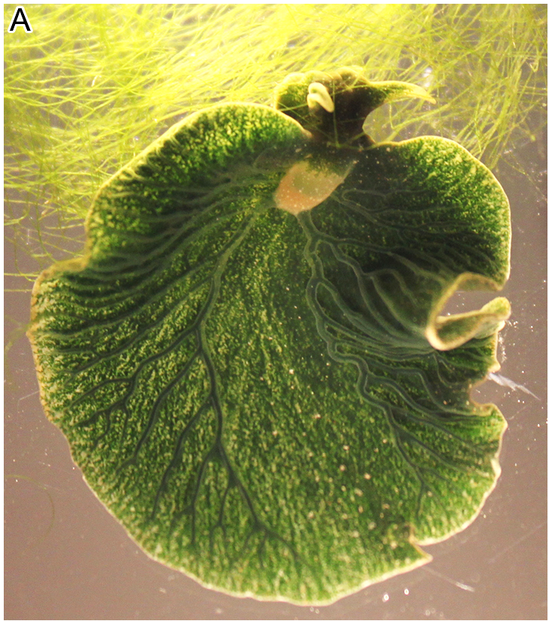
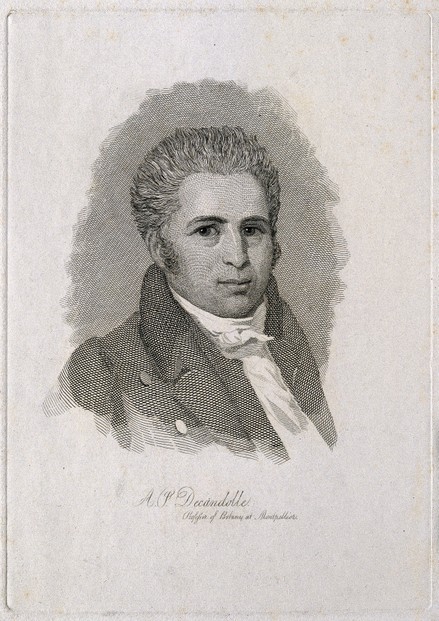
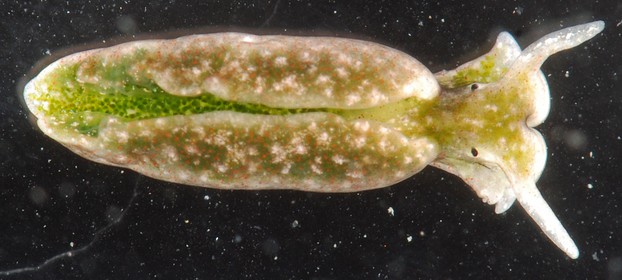
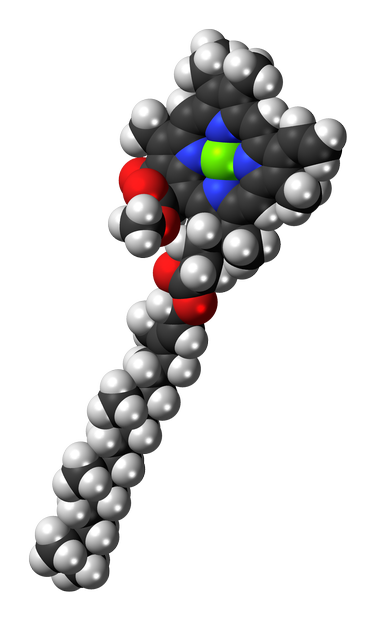
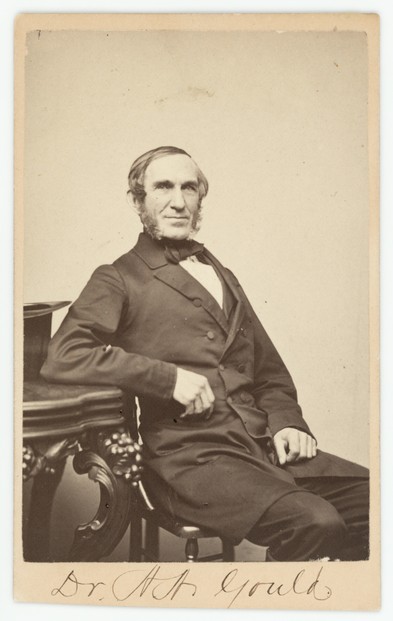
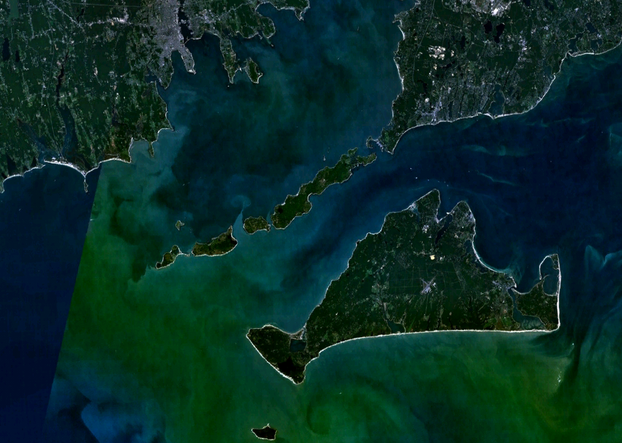
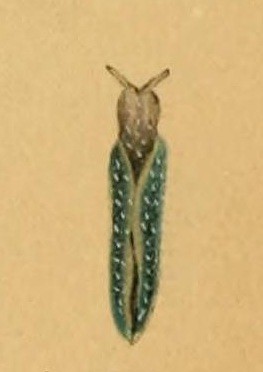
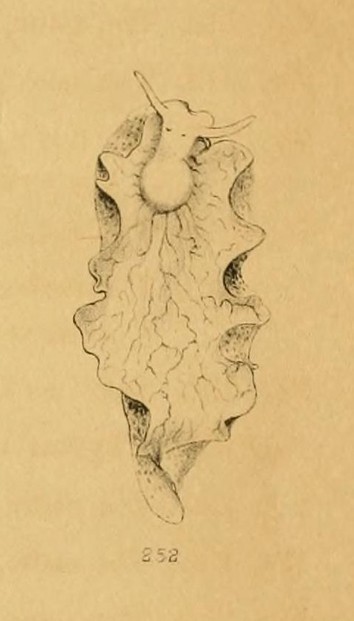
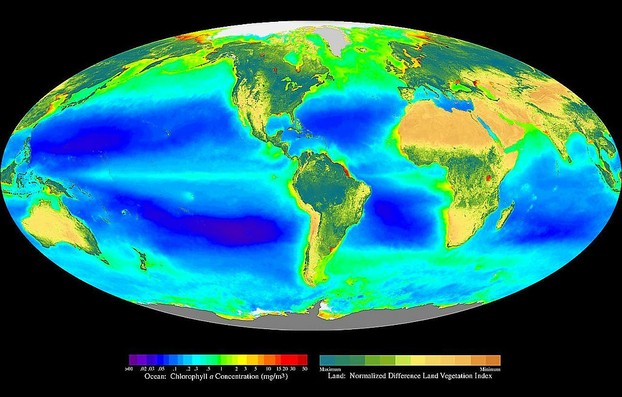
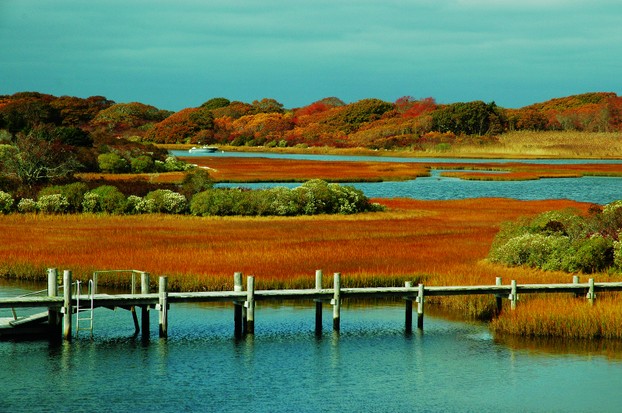
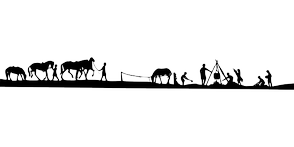

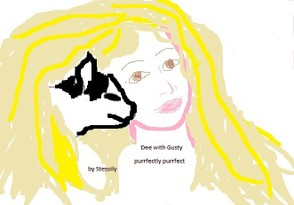
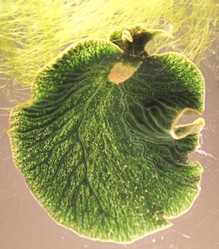

 Are Hawaiian Huakai Po Nightmarchers Avenging Halloween Thursday?on 10/02/2024
Are Hawaiian Huakai Po Nightmarchers Avenging Halloween Thursday?on 10/02/2024
 Mailing Addresses for 2023 Form 4868 Extending 1040 and 1040SR April 15, 2024, Due Dateon 04/15/2024
Mailing Addresses for 2023 Form 4868 Extending 1040 and 1040SR April 15, 2024, Due Dateon 04/15/2024
 Mailing Addresses for 2023 Forms 1040 and 1040SR Filed in 2024on 04/15/2024
Mailing Addresses for 2023 Forms 1040 and 1040SR Filed in 2024on 04/15/2024
 Mailing Addresses for 2022 Form 4868 Extending 1040 and 1040SR April 18, 2023, Due Dateon 04/13/2023
Mailing Addresses for 2022 Form 4868 Extending 1040 and 1040SR April 18, 2023, Due Dateon 04/13/2023

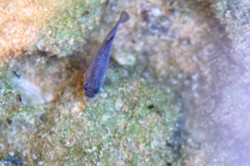
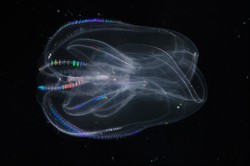
Comments
burntchestnut, For becoming acquainted with some of nature's bounty, it comes down to location, doesn't it? Perhaps some day you'll have an opportunity to see these slugs, which are quite unforgettable.
I've never heard of the emerald sea slug, but I'm not around oceans or marshland.